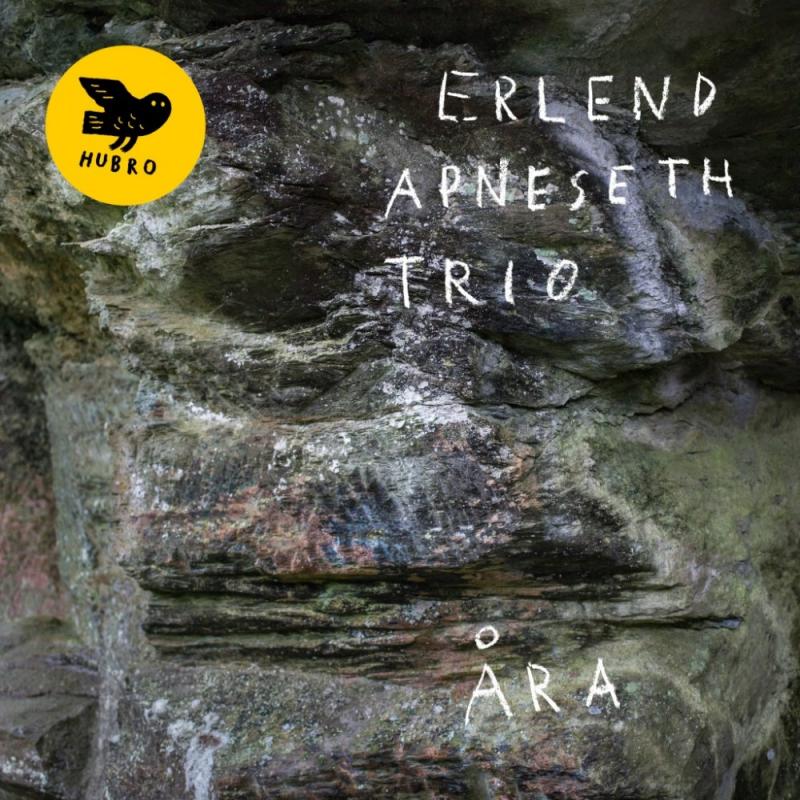CD: Erlend Apneseth Trio - Åra | reviews, news & interviews
CD: Erlend Apneseth Trio - Åra
CD: Erlend Apneseth Trio - Åra
Terrific recontextualisation of Norway’s Hardanger Fiddle

Although the Hardanger Fiddle is regarded as a traditional Norwegian instrument, its use stretches back to no earlier than the middle of the 17th century. The music players summon from its strings is more easily seen as traditional though: music to dance to.
Against this background, players have emerged who explore the instrument's potential to create music which cannot be seen as traditional. Nils Økland leads the field. He has taken the Hardanger Fiddle to jazz and the overtly experimental without sacrificing its essential character. The formally schooled Erlend Apneseth’s résumé is not as long as Økland’s but judging by Åra, his second album with the Erlend Apneseth Trio and fourth overall, the new frameworks he is setting for the instrument are as significant as those devised by Økland.
Åra consists of ten tracks. Apneseth is accompanied by acoustic guitarist Stephan Meidell (who also uses electronics) and drummer/percussionist Øyvind Hegg-Lunde. The poet Erlend O. Nødtvedt is heard on one track, “Lysne”. Although these are improvisations, everything sounds structured – either with a beginning, middle and an end or with an internally consistent flow – and the whole 37-minute album comes across as if it were composed.
Sonically and stylistically, the most surprising track is “Tundra” with its gentle, country style rhythmic bed. Elsewhere, when strings are plucked the feel of a koto bubbles up to evoke Japan. Improbably, the final minute of “Stryk” suggests first-album Kraftwerk. Yet the overriding impression is of a music balancing a formal approach to melodic arpeggios with an ECM-like sense of instruments coming together to form a single – and single-minded – entity. Terrific stuff.
rating
Explore topics
Share this article
The future of Arts Journalism
You can stop theartsdesk.com closing!
We urgently need financing to survive. Our fundraising drive has thus far raised £49,000 but we need to reach £100,000 or we will be forced to close. Please contribute here: https://gofund.me/c3f6033d
And if you can forward this information to anyone who might assist, we’d be grateful.

Subscribe to theartsdesk.com
Thank you for continuing to read our work on theartsdesk.com. For unlimited access to every article in its entirety, including our archive of more than 15,000 pieces, we're asking for £5 per month or £40 per year. We feel it's a very good deal, and hope you do too.
To take a subscription now simply click here.
And if you're looking for that extra gift for a friend or family member, why not treat them to a theartsdesk.com gift subscription?
more New music
 Music Reissues Weekly: Evie Sands - I Can’t Let Go
Diligent, treasure-packed tribute to one of Sixties’ America’s great vocal stylists
Music Reissues Weekly: Evie Sands - I Can’t Let Go
Diligent, treasure-packed tribute to one of Sixties’ America’s great vocal stylists
 'Deadbeat': Tame Impala's downbeat rave-inspired latest
Fifth album from Australian project grooves but falls flat
'Deadbeat': Tame Impala's downbeat rave-inspired latest
Fifth album from Australian project grooves but falls flat
 Heartbreak and soaring beauty on Chrissie Hynde & Pals' Duets Special
The great Pretender at her most romantic and on the form of her life
Heartbreak and soaring beauty on Chrissie Hynde & Pals' Duets Special
The great Pretender at her most romantic and on the form of her life
 The Last Dinner Party's 'From the Pyre' is as enjoyable as it is over-the-top
Musically sophisticated five-piece ramp up the excesses but remain contagiously pop
The Last Dinner Party's 'From the Pyre' is as enjoyable as it is over-the-top
Musically sophisticated five-piece ramp up the excesses but remain contagiously pop
 Moroccan Gnawa comes to Manhattan with 'Saha Gnawa'
Trance and tradition meet Afrofuturism in Manhattan
Moroccan Gnawa comes to Manhattan with 'Saha Gnawa'
Trance and tradition meet Afrofuturism in Manhattan
 Soulwax’s 'All Systems Are Lying' lays down some tasty yet gritty electro-pop
Belgian dancefloor veterans return to the fray with a dark, pop-orientated sound
Soulwax’s 'All Systems Are Lying' lays down some tasty yet gritty electro-pop
Belgian dancefloor veterans return to the fray with a dark, pop-orientated sound
 Music Reissues Weekly: Marc and the Mambas - Three Black Nights Of Little Black Bites
When Marc Almond took time out from Soft Cell
Music Reissues Weekly: Marc and the Mambas - Three Black Nights Of Little Black Bites
When Marc Almond took time out from Soft Cell
 Album: Mobb Deep - Infinite
A solid tribute to a legendary history
Album: Mobb Deep - Infinite
A solid tribute to a legendary history
 Album: Boz Scaggs - Detour
Smooth and soulful standards from an old pro
Album: Boz Scaggs - Detour
Smooth and soulful standards from an old pro
 Emily A. Sprague realises a Japanese dream on 'Cloud Time'
A set of live improvisations that drift in and out of real beauty
Emily A. Sprague realises a Japanese dream on 'Cloud Time'
A set of live improvisations that drift in and out of real beauty
 Trio Da Kali, Milton Court review - Mali masters make the ancient new
Three supreme musicians from Bamako in transcendent mood
Trio Da Kali, Milton Court review - Mali masters make the ancient new
Three supreme musicians from Bamako in transcendent mood
 Hollie Cook's 'Shy Girl' isn't heavyweight but has a summery reggae lilt
Tropical-tinted downtempo pop that's likeable if uneventful
Hollie Cook's 'Shy Girl' isn't heavyweight but has a summery reggae lilt
Tropical-tinted downtempo pop that's likeable if uneventful

Add comment